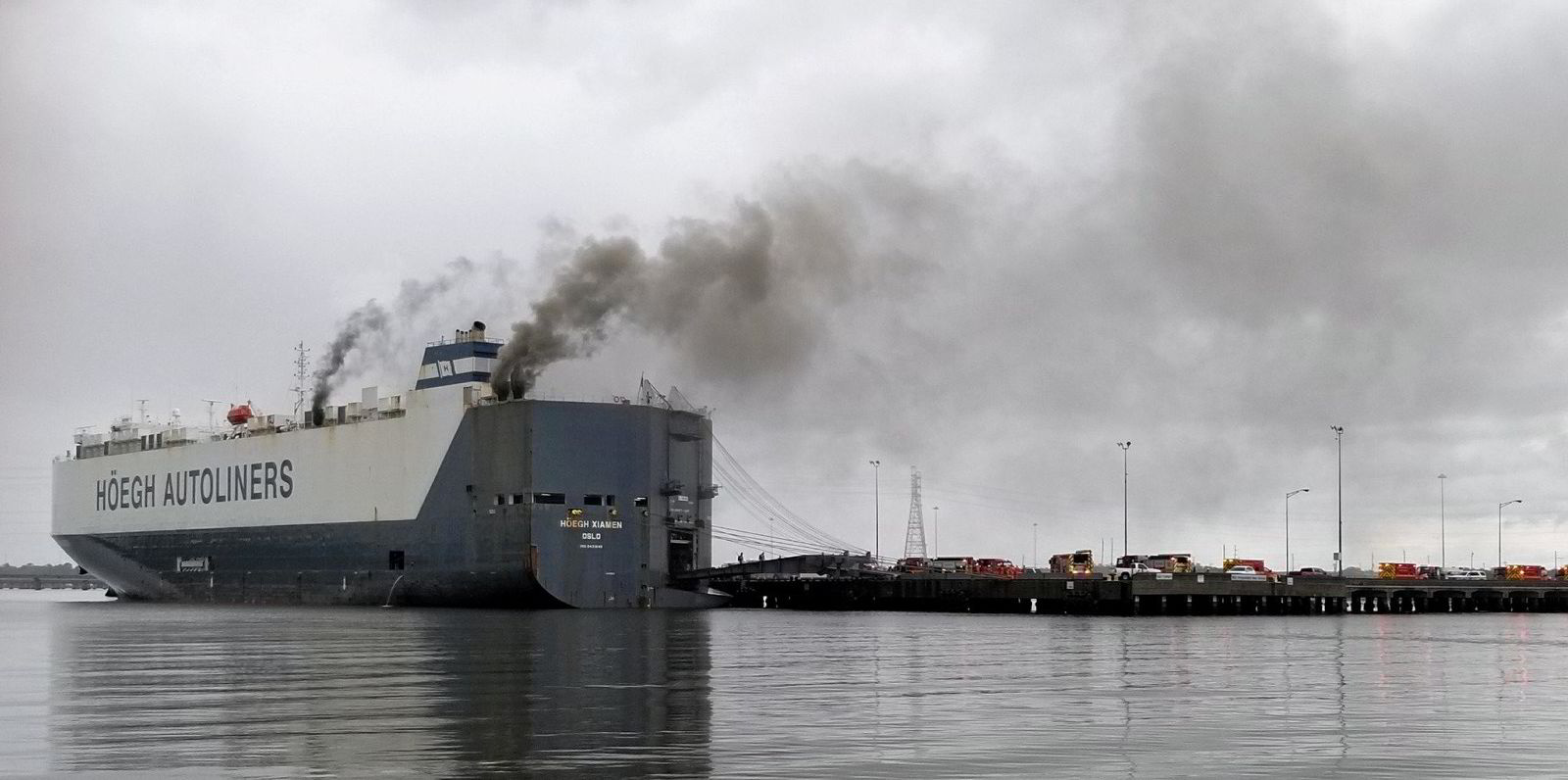An inspection of a used car’s battery might have helped prevent the blaze on a ro-ro at the Florida port of Jacksonville in 2020 that injured several firefighters.
But US investigators concluded that an exception in the international code for shipping dangerous goods may have prevented the batteries from being checked on vehicles loaded on the 4,902-ceu pure car carrier Hoegh Xiamen (built 2010).
Now, US officials have taken steps to close that inspection loophole with a new proposal at the International Maritime Organization.
The country’s IMO delegation has proposed amendments to the International Maritime Dangerous Goods Code (IMDG Code) aimed at incorporating the lessons of the fires on the Hoegh Xiamen and other car carriers.
Documents show the US has proposed new rules at the International Maritime Organization that would require inspections of vehicles and would establish charge limits for lithium-ion batteries on electric cars, among other revisions.
According to the filing with the IMO’s Sub-Committee on Carriage of Cargoes and Containers, US officials said the spate of ro-ro fires have raised concerns over special provisions in the IMDG Code, and the exemptions contained within them.
The blaze on the Norwegian-flagged Hoegh Xiamen is the main example offered in the proposal, filed ahead of the subcommittee’s September meeting.
The ship was preparing to depart Jacksonville for Baltimore on 4 June 2020 when crew noticed a fire had started on deck 8, where used cars had been stowed.
Serious injuries
After seafarers aiming to fight the fire were repelled by smoke, they were evacuated. All were unharmed, but nine local firefighters were injured, including five seriously.
It took a week to extinguish the blaze, which cost $40m in damage and resulted in the scrapping of the Ocean Yield-owned vessel, which was on charter to Grimaldi Group and managed by Hoegh Autoliners.
The National Transportation Safety Board found that the fire was likely caused by an electric arc or component fault in a used vehicle whose batteries were not properly connected and secured.

And investigators found that had the cars not been exempted from the IMDG Code, inspections of the electrical systems and batteries would have been required.
The investigation report pointed to six similar incidents dating back to 2015.
In the IMO proposal, US officials also pointed to the fire that resulted in the sinking of the 6,400-ceu pure car carrier Felicity Ace (built 2005) in March of this year, which raised different concerns.
“While the exact cause of the fire remains under investigation, the presence of new electric vehicles alongside used vehicles further raises concerns over the appropriateness of the exceptions provided by the [special provisions] in the IMDG Code,” the US said in its IMO submission.
The American delegation also raised concerns over risks presented by damaged cars.
And US officials pointed to the lack of rules on the state of charge for lithium-ion batteries, proposing the maximum battery charge should be set at 30%.
“While there are fuel volume limits for flammable liquids and flammable gases, there are no similar limits to the state of charge for lithium batteries, despite the understanding that limiting the amount of fuel on board decreases the hazards present in the event of an incident.”
UK action
The US is not alone in expressing concern about the role of vehicle batteries in fires on ships.
This month, the UK’s Maritime & Coastguard Agency issued guidance for ro-ro ferry operators on carrying electric vehicles on board their ships, in the absence of requirements by the IMO.
The regulator said that fires sparked by electric cars do not release significantly more energy than conventional vehicles, nor is there a greater risk of fires. But these fires may last longer and may pose a greater risk that they will reignite.
Electric vehicles may suffer a thermal runaway when the heat generated within the battery exceeds the amount of heat absorbed by its surroundings. This phenomenon can lead a fire to spread or can result in an explosion, although the likelihood of this is reduced by modern lithium on batteries with venting mechanisms.






